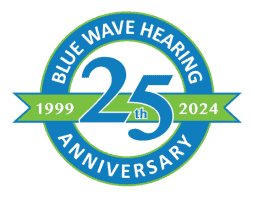- Alcohol and Hearing Health - April 9, 2025
- How Smoking Can Harm Your Ears - March 11, 2025
- Succeeding in the Workplace with Hearing Aids - February 10, 2025
Earwax, that yellowish-brown goo, might inspire an “Ick!” or two, but managing it the right way can make a difference in your hearing health.
Here’s a primer on why you have earwax and what to do about it.
Why is earwax in your ear?
Earwax, or “cerumen,” results from secretions by the ceruminous glands in the outer ear canal. The secretions help lubricate the ear canal and help maintain an acidic environment that curbs harmful bacteria and fungi.
Life without earwax would be a lot less comfortable: It not only helps keep the ear canal clean but prevents dirt and other debris from reaching and potentially damaging the eardrum. In addition, earwax can help keep ears from feeling itchy and dry.
When should earwax be removed?
Normally you needn’t remove earwax; your ears will naturally handle that function by pushing out the excess.
Sometimes the glands may produce more wax than the ear can eliminate, and blockage can occur. People who use hearing aids, wear earplugs, or push objects such as cotton swabs into their ears can be more prone to these problems.
When excess buildup gets to the point of causing pain or symptoms such as hearing loss, ringing in the ear, or dizziness, it’s time to clean it out.
What are the dos and don’ts of ear cleaning?
- DO use a warm, soft cloth — after washing or showering — to remove normal amounts of earwax at the outer ear, if needed.
- DO gently soften the earwax with drops of warmed olive oil, almond oil, water, or a commercial solution to remove larger amounts of earwax or an earwax plug.
- DO try irrigating the ear by gently rinsing it out with water.
- DON’T use ear candles, which may cause serious injury and have not been proven effective in scientific studies.
- DON’T stick cotton swabs or other objects in the ear; they can cause injury and push wax farther into the ear canal.
Sometimes earwax buildup requires the attention of a professional who can examine your ears, determine the nature of the problem, and customize a treatment, which may include prescribing eardrops, irrigating the ear, using a suction technique, or providing another appropriate solution.
Why do people still clean their ears with cotton swabs?
Despite the unequivocal warnings from the medical community and the warning on each box, people still clean their ear canals with cotton swabs. Why is that? To put it bluntly, it feels good, because of the numerous sensitive nerve endings in the ear canal. Compounding the problem is the itch-scratch cycle: You use a swab to calm an ear itch, but the more you use cotton swabs, the more your ear itches.


